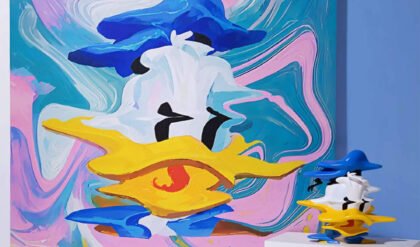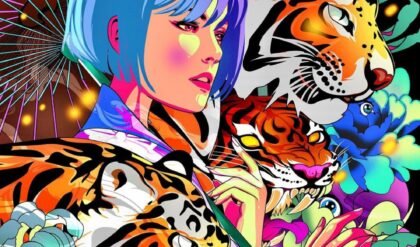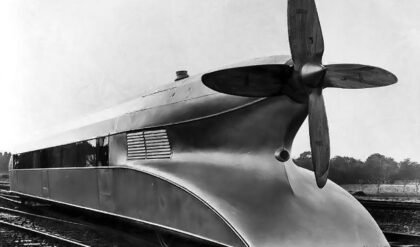A member of the Bored Panda community depicted famous monsters in their most adorable form using AI technology. In honor of October and the upcoming Halloween, these 3D renders are sure to be enjoyed by all.

Cthulhu, a fictional cosmic entity, was created by author H.P. Lovecraft and made its first appearance in the short story “The Call of Cthulhu.” Often depicted as a monstrous, ancient being with a humanoid shape and tentacles on its face, Cthulhu rests in a dormant state beneath the ocean in the sunken city of R’lyeh. Its purpose is to eventually return and unleash chaos upon humanity. Cthulhu plays a central role in Lovecraft’s Cthulhu Mythos, symbolizing cosmic horror and the insignificance of humanity when faced with unfathomable cosmic forces. This character has become an iconic representation of horror in popular culture.
h/t: boredpanda

Medusa, a character in Greek mythology, is one of the three Gorgon sisters. She is often depicted as a monstrous woman with snake hair. Her gaze turns anyone who looks into her eyes into stone, making her a fearsome and deadly creature. Perseus, a Greek mythological hero, famously defeated Medusa by using a mirrored shield to avoid direct eye contact and then beheading her while she slept. Even in death, her severed head maintained its petrifying ability and was later wielded as a weapon by Perseus. Medusa’s tale has been a popular subject in art, literature, and mythology, symbolizing the perils of vanity and the power of feminine allure.

Gremlins are fictional creatures known for their mischievous and destructive behavior. They are often depicted as small, impish beings. The concept of gremlins originates from British folklore but became popular during World War II. Pilots believed that gremlins were responsible for mechanical failures on aircraft. Gremlins gained widespread recognition through the 1984 horror-comedy film “Gremlins,” directed by Joe Dante. In the film, gremlins are initially portrayed as cute and harmless creatures. However, when they come into contact with water or eat after midnight, they transform into dangerous and destructive monsters. The success of the movie led to a sequel, “Gremlins 2: The New Batch,” in 1990. Gremlins have since become iconic figures in the realm of creature features and horror-comedy.

The Stay Puft Marshmallow Man is a character from the 1984 film “Ghostbusters,” directed by Ivan Reitman. In the movie, the Stay Puft Marshmallow Man is summoned as a result of a supernatural event and becomes a giant, rampaging monster made of marshmallow that terrorizes New York City. Stay Puft has a cheerful appearance, resembling a large marshmallow mascot, but its destructive abilities make it a formidable enemy for the Ghostbusters. The character has become a symbol of the “Ghostbusters” franchise and 1980s pop culture, representing the unexpected and absurd supernatural threats that the team encounters in their comedic ghost-hunting adventures.

The Predator is a fictional extraterrestrial species and a central character in the “Predator” film franchise. First introduced in the 1987 film “Predator,” directed by John McTiernan, these creatures are known for their advanced technology, hunting prowess, and distinctive appearance, including mandibles and thermal vision. Predators travel to other planets to hunt humans and other formidable prey as a rite of passage. The character has appeared in several sequels and spin-off films, including “Predator 2,” “Predators,” and “The Predator.” The Predator has become an iconic figure in science fiction and action cinema, known for its menacing nature and catchphrase, “Get to the choppa!”

Pinhead is a character from the “Hellraiser” horror franchise by Clive Barker. He leads the Cenobites, extradimensional beings who explore the line between pleasure and pain. Pinhead is recognizable by his bald head with a grid-like pattern of nails and his love for delivering gruesome punishments to those who open the Lament Configuration puzzle box. The character is an iconic figure in horror, appearing in various films, novellas, and comics in the Hellraiser universe. Pinhead combines horror and philosophy, challenging conventional ideas of pain and pleasure in a terrifying and thought-provoking way.

A werewolf is a creature often depicted in folklore and horror fiction. It is portrayed as a human who can transform into a wolf or a wolf-like creature, usually during a full moon. The transformation is associated with rage and a craving for human flesh or blood. Werewolves have been part of various cultures and mythologies for centuries, with stories varying across regions. They have appeared in films, books, and other media, contributing to their popularity in the horror genre. The idea of the werewolf explores themes of transformation, inner conflict, and the duality of human nature.

Dracula, a character created by Irish author Bram Stoker in his 1897 novel “Dracula,” is a vampire. He is portrayed as an ancient aristocrat who can transform into a bat and consume the blood of the living to survive. Originating from Transylvania, the novel narrates his endeavor to relocate to England and disseminate the curse of the undead. A group of individuals, led by Professor Abraham Van Helsing, strives to thwart his plans. Dracula has now become an enduring and renowned figure in horror literature, inspiring countless adaptations across various media platforms and cementing his status as an iconic vampire.

Frankenstein’s Monster, also referred to as “the Creature,” is a fictional character in Mary Shelley’s 1818 novel “Frankenstein; or, The Modern Prometheus.” Brought into existence by Dr. Victor Frankenstein through a scientific experiment, the Creature is a tragic figure, ostracized by society because of his hideous appearance. This iconic character delves into themes of scientific ambition, creation, and the repercussions of assuming divine powers, symbolizing the enduring ethical and moral predicaments linked to scientific progress and human behavior in the presence of the unfamiliar.

Pennywise, the main antagonist in Stephen King’s 1986 horror novel “It,” is a fictional character. It is a shape-shifting entity that often takes the form of a clown to prey on children’s fears in the town of Derry, Maine. Its true form is an ancient cosmic entity that awakens every 27 years to feed on the fear of its victims, especially children. Pennywise gained more recognition through film adaptations, notably in the 1990 miniseries “It” and the two-part film adaptation released in 2017 and 2019. The character has become an iconic symbol of fear in popular culture, known for its creepy clown disguise and ability to exploit its victims’ deepest fears.

Godzilla is a fictional giant monster and iconic figure in Japanese pop culture. Created by Toho Company, Godzilla first appeared in the 1954 film “Godzilla,” also known as “Gojira” in Japanese. Often depicted as a massive, prehistoric creature awakened or mutated by nuclear radiation, Godzilla is known for its destructive power and battles with other monsters and humanity. Over the decades, the character has starred in numerous films, becoming a symbol of nuclear anxiety and a representation of the consequences of atomic warfare. Godzilla has a large fanbase and remains a prominent figure in the world of kaiju cinema.

Sandworms are fictional creatures from the science fiction novel “Dune” by Frank Herbert, published in 1965, and its adaptations. These colossal, desert-dwelling beings are a central element of the planet Arrakis, also known as Dune. Sandworms are enormous, carnivorous creatures that live beneath the desert sands of Arrakis. They play a crucial role in the planet’s ecology because their bodily fluids, called “melange” or “spice,” are the most valuable substance in the universe, sought after for its prescient properties. The harvesting of spice and the dangers posed by sandworms are central themes in the “Dune” series, making these creatures iconic of the harsh and mysterious world of Arrakis.

The Rancor is a fictional creature in the “Star Wars” universe, kept by Jabba the Hutt in his palace on Tatooine. It is a massive, reptilian carnivore known for its size, sharp teeth, and powerful claws, making it a formidable opponent. In “Star Wars: Episode VI – Return of the Jedi,” the Rancor is used by Jabba for execution and faces off against Luke Skywalker in a memorable battle at the palace. Luke defeats the Rancor by causing a heavy gate to fall on it. The Rancor’s appearance and role in the film have made it a notable creature in the “Star Wars” franchise, adding to the diverse array of alien species and monsters in the galaxy.

King Kong is a fictional giant ape that made its debut in the 1933 film “King Kong,” directed by Merian C. Cooper and Ernest B. Schoedsack. The story centers around King Kong, a colossal ape found on a remote, unexplored island known as Skull Island. After being captured and transported to New York City, Kong becomes a spectacle and meets a tragic end atop the Empire State Building. King Kong is renowned for his enormous size, commanding presence, and the poignant beauty of his tale. The character has been featured in numerous films, including remakes and spin-offs, as well as various forms of media, solidifying his status as an iconic and enduring figure in the realms of cinema and popular culture.





